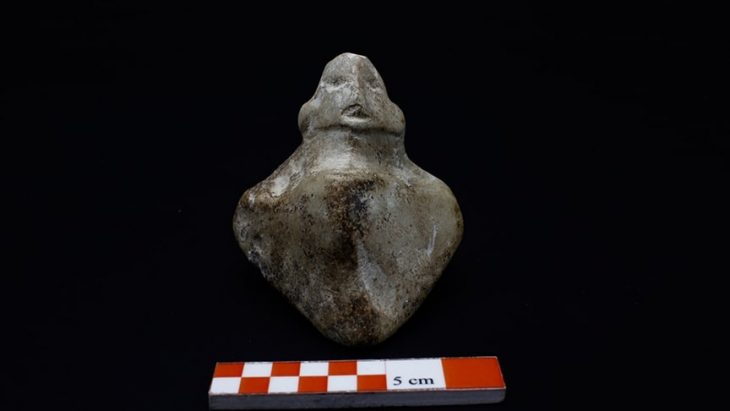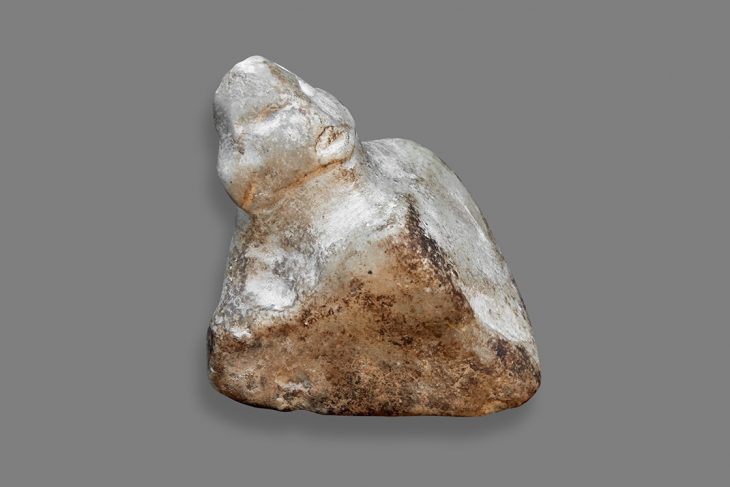Archaeologists discovered the 8,500-year-old marble statue during the 29th season of excavations at Çatalhöyük, an ancient city center in Anatolia located within the Kumra district of Konya, Turkey. This discovery sheds new light on the rich history and cultural significance of this Neolithic city, which stands as one of the earliest models of urbanization in Anatolia.
The statuette, measuring a mere 5 centimeters in height, boasts a prismatic form with an enigmatic gender identity and a human shape depicted in a reclined posture. This distinctive representation diverges from the typical female figures that often characterize Çatalhöyük’s archaeological finds, adding an intriguing layer of complexity to our understanding of ancient Anatolian cultures.
Assoc. Dr. Ali Umut Türkcan, Head of Excavation and Faculty Member at Anadolu University, shared his excitement about the recent discoveries made during the excavation season. He highlighted the unveiling of a new neighborhood and street, alongside the remarkable find of the marble statuette within the 9,000-year-old Neolithic City of Çatalhöyük.

Speaking about the significance of the marble statuette, Türkcan emphasized its rarity and unique characteristics. The figurine, leaning back slightly and exhibiting details reminiscent of male representations, challenges the conventional narrative associated with Çatalhöyük’s focus on female fertility symbolism. The elongated head and triangular depiction further distinguish this find from classical Çatalhöyük artifacts, showcasing intricate details and fine craftsmanship.
The discovery site, known as the ‘North Terrace,’ yielded the marble statuette nestled at the foot of a plastered wall within a structure known as ‘Place 66.’ This area, characterized by rubble and burn marks, suggests a complex use of space that includes storage functions alongside ritualistic or symbolic activities, as evidenced by the placement of the statuette alongside an obsidian arrowhead and a lump of lime, their exact purpose still a mystery.
Çatalhöyük itself is a treasure trove of ancient history, situated just 10 kilometers east of Konya’s Çumra Township. The site’s tumulus structure, with two distinct flat areas, earned its name from the Turkish word “çatal,” meaning fork, owing to its topographical features. Discovered initially in 1958 by J. Mellaart, Çatalhöyük has undergone extensive excavations, revealing 13 layers of settlement dating back to 5500 B.C.
The significance of Çatalhöyük extends beyond its architectural and archaeological features. It stands as a testament to the ingenuity and cultural richness of ancient Anatolian civilizations, offering glimpses into the earliest forms of human settlement, house architecture, and sacred structures. Each excavation season brings forth new surprises, further unraveling the mysteries of this ancient urban center and deepening our appreciation for the complexities of human history.
As researchers continue to study and analyze the recently discovered marble statuette and its context within Çatalhöyük, we anticipate further insights into the beliefs, rituals, and artistic expressions of Neolithic Anatolian societies. These discoveries not only enrich our understanding of the past but also inspire us to explore the intricate tapestry of human civilization that spans millennia.
